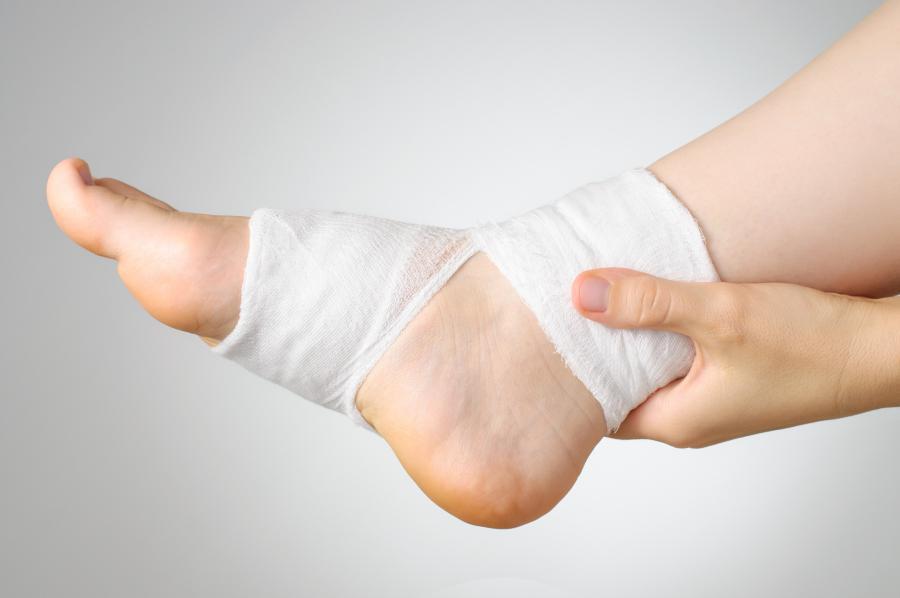Ligaments are tough bands of tissue that connect bones to other bones, particularly in the joints. And while ligaments are naturally flexible, they can overstretch or tear if they’re forced beyond their limit. The result is called a sprain.
When an injury like this occurs in the ankle, it’s called a sprained ankle, and it can result in joint pain and swelling. For example, it can happen if you twist or roll your ankle.
David B. Glover, DPM, FACFAS, of Mountain View Foot & Ankle Institute in South Ogden, Utah, is an expert in treating sprains. In this blog, he explains what you should do if you sprain your ankle.
How to care for a sprained ankle
If your ankle hurts, you should first schedule an appointment with Dr. Glover. While it could be a minor sprain, it could also be something more serious, such as a fracture.
And, even if it’s a minor sprain, it’s still an injury that requires proper care to heal. In fact, most sprains take at least four weeks to heal. Rushing the healing process could cause you more pain and put you at risk for future injury.
Dr. Glover will examine your ankle, ask about your symptoms, and, if needed, order other testing, such as X-rays. Then he’ll work with you to develop a treatment plan. If your sprain is minor, he may recommend the following treatments:
1. Rest your ankle
One of the most important things you can do to help a sprained ankle heel is to give it rest. So you’ll need to do your best to stay off your ankle for a few days — or for as long as Dr. Glover recommends — and avoid any activities that cause pain.
2. Apply ice
Putting ice on your ankle should help reduce inflammation and pain. If possible, apply ice immediately after your injury for about 20 minutes. And, as you heal, continue applying ice for 15-20 minutes, up to three times a day.
3. Reintroduce activities slowly
You should be able to gradually reintroduce activities within a few days, but you should do it slowly. Using your ankle too quickly after a sprain could increase your risk for future sprains or chronic ankle instability.
4. Use compression bandages
A sprain may make your ankle feel unstable, but wearing compression bandages or an ankle brace may help stabilize the joint. Talk with Dr. Glover about how to properly bandage your ankle so you don’t cut off circulation.
Along with compression, remember to elevate your ankle above your heart when you’re resting. Elevating it can help drain excess fluid and keep swelling down.
5. Participate in physical therapy
Once the pain and swelling subside, Dr. Glover may prescribe physical therapy for your sprained ankle. Therapy involves specialized stretches and strengthening exercises to rebuild strength and stability in the injured area.
Undergoing physical therapy for a sprained ankle could help you heal faster and reduce your risk of suffering recurrent sprains.
If you have a sprain and want treatment, or if you want to see if you have a sprain, we can help. To learn more, call 801-383-2189 or book an appointment online with Mountain View Foot & Ankle Institute today.

